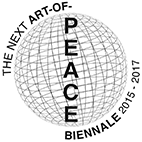Performance-presentation, ‘Video Breakfasting Together, If You Wish (after Robert Filliou)’ at ‘Learning From The CRUMB Method Over A Cup Of Tea: Reflections On Creating And Exhibiting Digital Arts’ panel, ISEA2013: 19th International Symposium on Electronic Art, Sydney.
As part of a conference panel alongside fellow CRUMB researchers at ISEA 2013 (Learning From The CRUMB Method Over A Cup Of Tea: Reflections On Creating And Exhibiting Digital Arts), I outlined my research in identifying and developing curatorial models of practice after globalisation that articulate the principles of The Eternal Network, created by artists Robert Filliou and George Brecht in 1968, in which the network itself is the artwork. More than solely a means of distribution or medium of production, The Eternal Network became a conceptual context for ‘permanent creation’ [1]. My research explores the attractiveness of networks as decentralized or distributed environments bypassing institutional curatorial spaces. There is often a political as well as aesthetic dimension to the attractiveness of networks-as-artworks. This may now be undermined by a dependence of these networks upon the Internet, argued to be ‘the most material and visible sign of globalisation’ [2]. Lovink [3] observes that the ‘pace [of globalisation] has increased with the advent of new technologies, especially in the area of telecommunications’ and so artists, activists and commercial, corporate players alike have employed online networks in search of their respective ‘utopias’. Lovink elaborates that ‘we need to develop a long-term view on how networked technologies should and should not be embedded in political and cultural practices’ [4].
Read More



